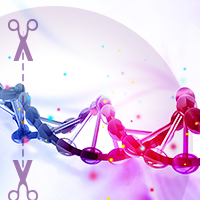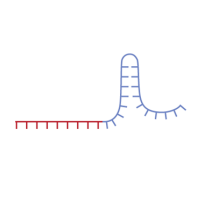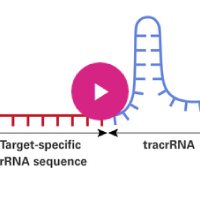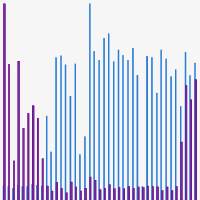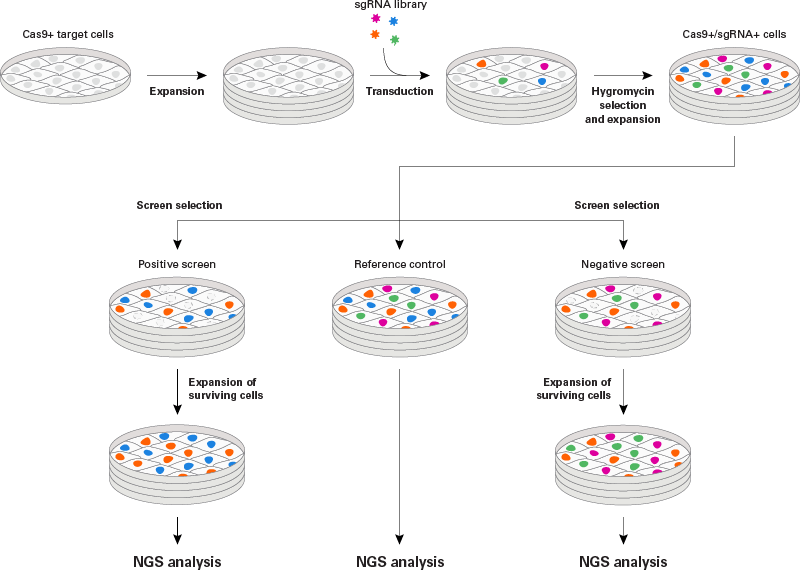Guide-it CRISPR/Cas9 Gesicle Production System
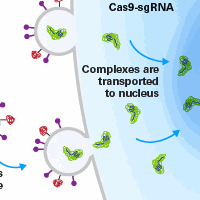
While CRISPR/Cas9-mediated gene editing is a powerful technique for genome manipulation, two significant challenges remain: obtaining efficient delivery of Cas9 and the gene-specific single guide RNA (sgRNA) to all cell types, and achieving fewer off‑target effects. To address these challenges, we have developed cell‑derived nanovesicles called gesicles that are created using the Guide-it CRISPR/Cas9 Gesicle Production System. CRISPR/Cas9 gesicles contain active Cas9 protein complexed with an sgRNA specific to a gene of interest, and mediate binding and fusion with the membrane of a wide range of target cells.
While CRISPR/Cas9-mediated gene editing is a powerful technique for genome manipulation, two significant challenges remain: obtaining efficient delivery of Cas9 and the gene-specific single guide RNA (sgRNA) to all cell types, and achieving fewer off‑target effects. To address these challenges, we have developed cell‑derived nanovesicles called gesicles that are created using the Guide-it CRISPR/Cas9 Gesicle Production System. CRISPR/Cas9 gesicles contain active Cas9 protein complexed with an sgRNA specific to a gene of interest, and mediate binding and fusion with the membrane of a wide range of target cells. These features can increase gene-editing efficiency to levels that are often higher than those obtained using plasmid‑based delivery methods. Additionally, this method allows for tight control of the dose and duration of the Cas9‑sgRNA complex in the cell, with the added benefit of reduced off‑target effects. The nanovesicles are produced in a Gesicle Producer 293T Cell Line via co-overexpression of packaging-mix components, including a nanovesicle-inducing glycoprotein and a protein for cell-surface display that mediates binding and fusion with the cellular membrane of target cells. Simultaneous overexpression of the Cas9 protein from Streptococcus pyogenes and a target-specific guide RNA (sgRNA) results in incorporation of the Cas9-sgRNA complex within the gesicles. After the resulting Cas9-sgRNA gesicles are harvested and applied to your target cells, they will efficiently enter the cells and mediate efficient gene editing.
This system provides the components needed for cloning and expressing your target-specific guide RNA, plus packaging reagents for producing CRISPR/Cas9 gesicles. The Gesicle Producer 293T Cell Line is sold separately.
Overview
- Broad tropism: Efficient delivery of active Cas9 protein and target-specific sgRNA to a broad range of cell types
- Reduced off-target effects: Delivery of Cas9 protein eliminates genomic integration and reduces off-target effects
- Genome editing only when you want it: Tight control over dose and timing of delivery and editing
- Notes:
- The traditional guide RNA scaffold provided with most commonly used vectors will not work with Cas9 delivered using gesicle technology. It is essential to use the pGuide-it-sgRNA1 Vector supplied in Cat. # 631613 or Cat. # 631612 when making gesicles, since this vector contains an optimized scaffold sequence for increased assembly and stability.
- The Gesicle Producer 293T Cell Line is not provided with the system and may be purchased separately (Cat. # 632617)
- Stem cell applications: We have demonstrated high-efficiency editing of endogenous genes in human iPS cells using a combination of CRISPR/Cas9 gesicles and our DEF-CS culture system.
- Note regarding primary CD34+ cells and primary T cells: While CRISPR/Cas9 gesicles have worked well in editing hard-to-transfect cell lines such as Jurkat cells, we have so far been unable to demonstrate high editing efficiency in primary CD34+ cells and primary T cells.
More Information
Applications
- CRISPR/Cas9-mediated gene editing
- Stem cell research
Additional product information
Please see the product's Certificate of Analysis for information about storage conditions, product components, and technical specifications. Please see the Kit Components List to determine kit components. Certificates of Analysis and Kit Components Lists are located under the Documents tab.
CRISPR/Cas9 information
Choosing sgRNA design tools
Browse a collection of sgRNA design tools for Cas9-based genome editing experiments.
Choosing a target sequence for CRISPR/Cas9 gene editing
Learn how to design sgRNA sequences for successful gene editing.
The CRISPR/Cas9 system for targeted genome editing
Overview of CRISPR/Cas9 system for genome editing.
CRISPR/Cas9 genome editing tools
An overview of tools available for each step in a successful genome editing workflow.
Gene editing technical notes
Delivery of Cas9 and sgRNA to mammalian cells using a variety of innovative tools.
SNP engineering application note
Learn about a simple assay for sensitive detection of single-nucleotide substitutions in bulk-edited or clonal cell populations.
CRISPR/Cas9 gesicles overview
Learn about Guide-it CRISPR/Cas9 Gesicle Production System components and workflow.
CRISPR library screening webinar
Watch this webinar to learn how you can perform genome-wide lentiviral sgRNA screens easily.
Choosing an HDR template format
Watch a webinar on how to choose the right HDR template for knockin experiments.
Guide-it SNP Screening Kit FAQs
Get answers to frequently asked questions and view a video explaining the enzymatic assay.
Takara Bio USA, Inc.
United States/Canada: +1.800.662.2566 • Asia Pacific: +1.650.919.7300 • Europe: +33.(0)1.3904.6880 • Japan: +81.(0)77.565.6999
FOR RESEARCH USE ONLY. NOT FOR USE IN DIAGNOSTIC PROCEDURES. © 2025 Takara Bio Inc. All Rights Reserved. All trademarks are the property of Takara Bio Inc. or its affiliate(s) in the U.S. and/or other countries or their respective owners. Certain trademarks may not be registered in all jurisdictions. Additional product, intellectual property, and restricted use information is available at takarabio.com.



